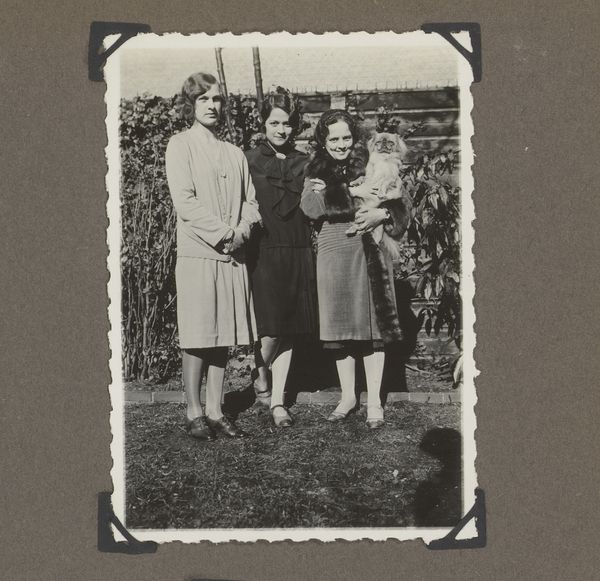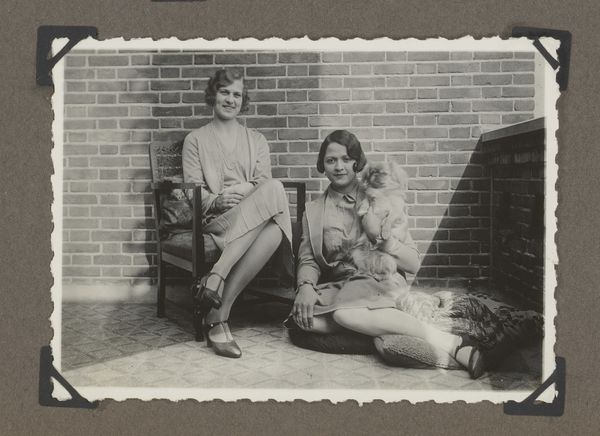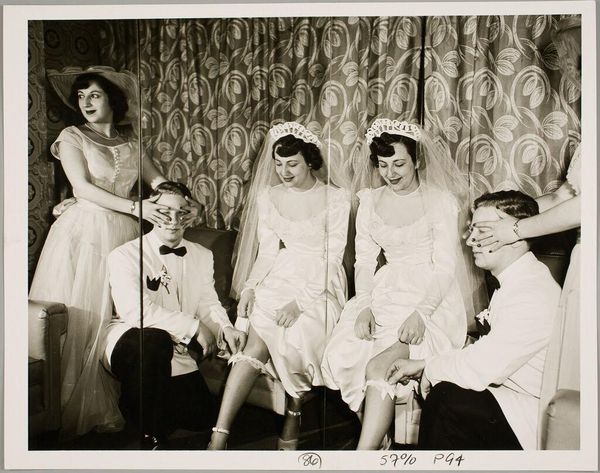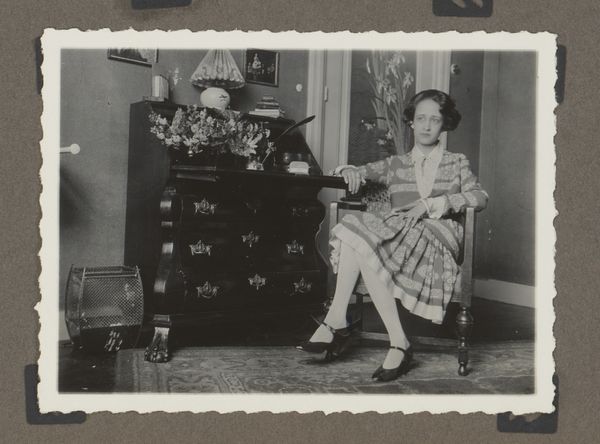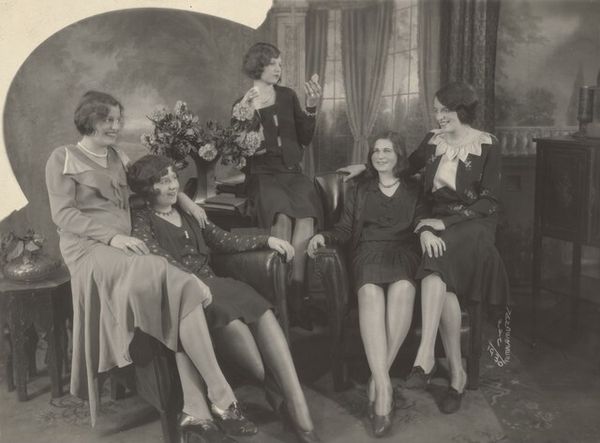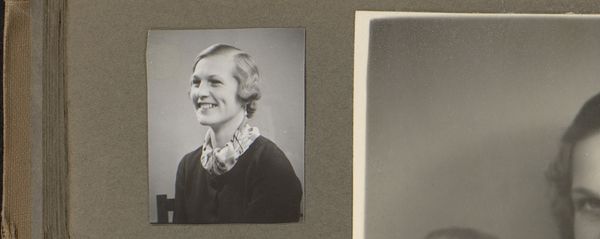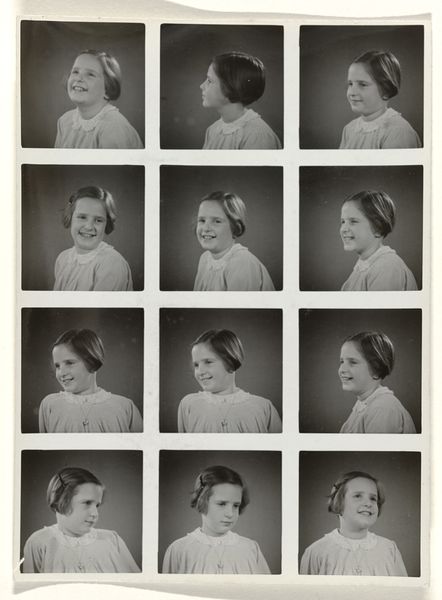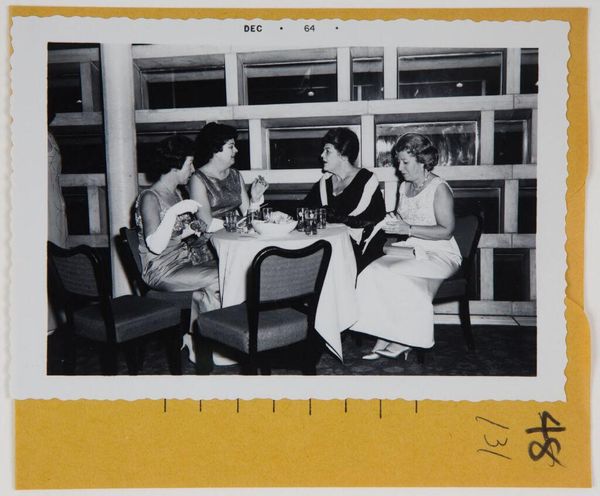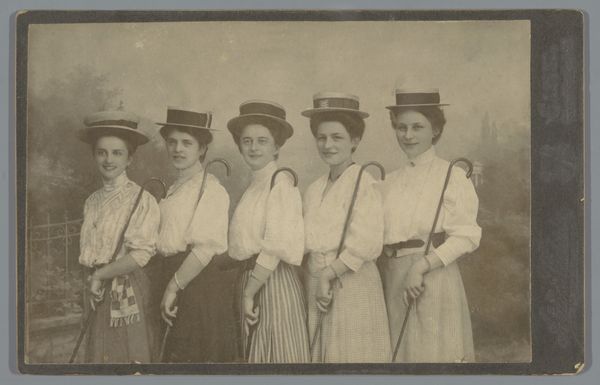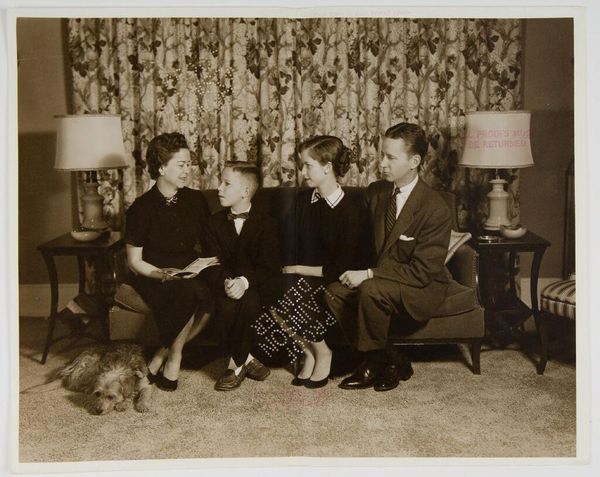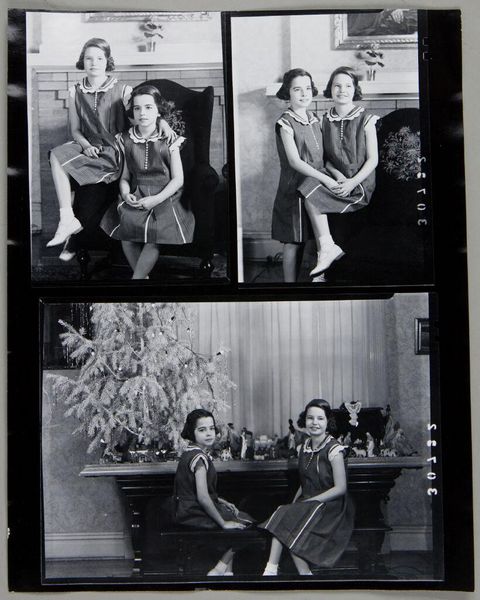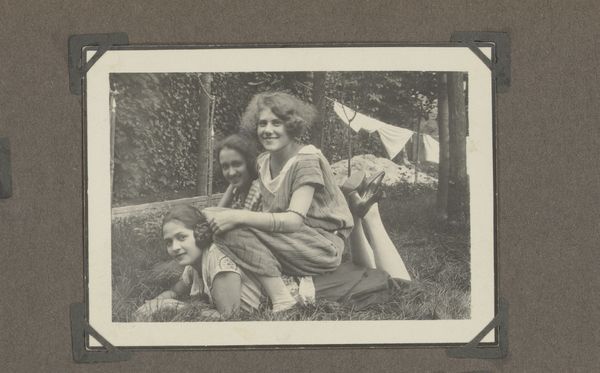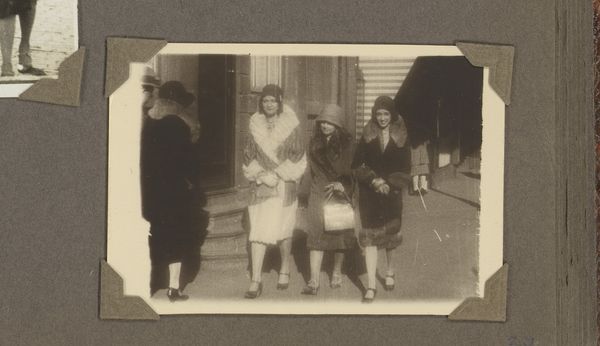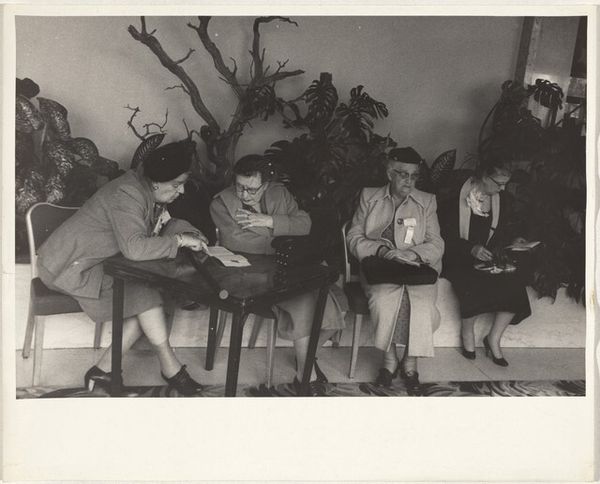
Groepsportret van Wilhelmina van Zijll de Jong en twee andere vrouwen met feesthoeden 1934 - 1935
0:00
0:00
photography
#
portrait
#
photography
#
group-portraits
#
genre-painting
#
modernism
Dimensions: height 57 mm, width 87 mm
Copyright: Rijks Museum: Open Domain
Curator: At first glance, the high contrast of the figures against the backdrop draws the eye in, but immediately the gaze is directed towards the subjects' stylized costume hats, giving the impression of performance and masking, even under ordinary conditions. Editor: Masks, certainly. And perhaps an affectation of grandeur, or at least a temporary indulgence, given their social standing. We’re viewing "Groepsportret van Wilhelmina van Zijll de Jong en twee andere vrouwen met feesthoeden"—Group Portrait of Wilhelmina van Zijll de Jong and Two Other Women With Party Hats. It’s a photograph created around 1934 or '35. Curator: In considering these women’s station, observe the careful composition, each woman centered within the frame, subtly individualized. The hat is the centerpiece, but the gowns contribute through shadow and stark contrasts. Editor: Absolutely. This is where material concerns become key. Who created those garments? Were they made in-house, or bought at a market? I ask because that era was often dependent upon the labor of the poorer in society. The photographic material itself, its accessibility and availability at this time is an important element to reflect upon too. It points to the shift in the relationship between artist, model and producer of the photographic materials. Curator: While these factors surely resonate within the broader context of its time, within the composition itself, observe the nuances in tone and light. A strong variance suggests a controlled setup, emphasizing depth despite the print's inherent two-dimensionality. The eye is less a 'window' and more of a reflector within this genre piece. Editor: Indeed. Photography during this period walks a tightrope between portraiture and social documentation. I believe that even in a controlled image, it gives hints of both the lived experience and a crafted public persona that shifts, thanks to the camera’s relatively quick development. These advances gave many different voices means of both expressing themselves and reflecting aspects of their society like income gaps in production. Curator: A fair reflection, yet these tonal complexities transcend mere documentary; consider it less capturing, but rather presenting—the conscious framing of an atmosphere. These are portraits of identities performing, crafting and exploring identity itself. Editor: Precisely. This examination of image creation gives us much to ponder within material and labor contexts as it evolved through the turn of the century. Curator: The play of tones, considered with those performances, make it a thought-provoking picture.
Comments
No comments
Be the first to comment and join the conversation on the ultimate creative platform.
